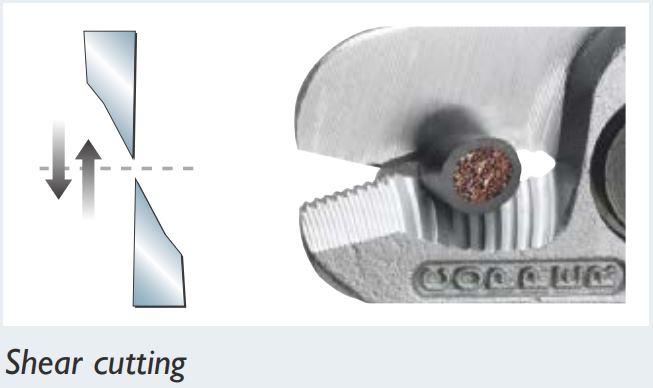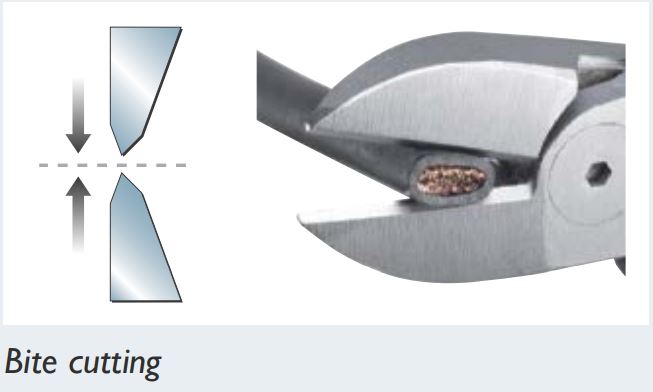Cutting, Stripping and Crimping of wires sound easy and effortless. As mundane as it sounds, this task for an electrician doing daily requires a high quality, optimal tool rather than a standard tool.
Just like any other product developed by Phoenix Contact our tools range have been developed with utmost care, considering ergonomics and usability to provide quality precision and effectiveness. It is no secret Phoenix Contact tools are of the highest quality and always have been a huge talking point when visiting engineers. As one of our customers said, “If you use quality tools, your quality of work improves, and therefore you have less callouts for repairs.”
Nicely put. Let us explore more…
Cut
Cable processing starts with the trimming or cutting of the conductor or cable.
Conductors and cables come in a wide range of sizes, shapes, and insulation. They can only be processed professionally and permanently with quality tools. Optimum leverage means that you only need to apply low manual force to generate maximum force in the cutting area.
When it comes to cutting, conductors and cables in the larger cross section range up to 1400 mm2, ratchet-driven cable cutters are the solution. Here, the finely stepped down drives also keep the required manual force to a minimum.
Both versions, with direct and indirect force transmission, feature special cutting geometries which help to ensure ease of movement and can be relied upon to produce burr-free right-angle cuts. Accidental deformation of the conductor is thereby prevented. The cutting method described above, which is also known as shear cutting, is listed under the generic term “splitting” in DIN 8588. The two blades move toward and past one another and cut (shear) the material without burring.

Bite cutting involves two wedge-shaped blades which move toward one another to cut the material. The wedge angle set for the blades is deliberately large and therefore stable. In addition to the hardening of the entire tool, the cutting area is subsequently hardened again inductively. This makes it possible to sever even extremely hard materials such as piano wire and spring steel with a tensile strength of up to 2300 N/mm2 without damaging the tool. Bite cutting is suitable only to a limited extent for cutting through cables and lines.

When used appropriately, the CUTFOX cutting tools from Phoenix Contact can be relied upon for long-term stability and permanently consistent results.
Strip
Stripping is the next step in the manufacturing process for creating a reliable crimp connection. In this case, a distinction is made between stripping and dismantling.
Stripping is used as a generic term as well as to describe the removal of insulation from conductors up to 16 mm2. Dismantling describes the stripping process for large conductor cross sections and multi-strand or multi-layered conductors and cables.
Insulation can be removed professionally and quickly using the right stripping or dismantling tool. The length of insulation to be removed varies depending on the terminal point and connector. This is set by means of adjustable limit stops and ensures consistent stripping lengths.
If the insulation is removed, ensure that neither the single wires inside nor the braided shield are damaged. The remaining insulation must not be damaged by the grip pressure, although pressure points on and colour changes in the insulation material are permitted. Further faults that need to be prevented are stipulated in DIN IEC 60352-2.
Blade geometries suitable for the application in question are used to process special insulation materials. V blades are used for both hard (e.g., Teflon/RADOX®) and soft rubber insulations (silicone). In contrast to the straight blade geometry, V blades cut the insulation all the way around, thereby reducing the tear-off force.
Phoenix Contact provides a wide range of dismantling and stripping tools for convenient, safe processing of different conductors, cables, and wire types.


Crimp
Crimping describes the joining of the contact and conductor mechanically.
In addition to crimping, two further terms are used, based on standards. The type of deformation plays a decisive role here. Based on the type of contact, a distinction is made between:
- Crushing, for insulated cable lugs
- Pressing, for ferrules, non-insulated cable lugs, and similar enclosed connectors.
If slip-on blade connectors are being processed, for example, this is called crimping. Consider several important points to establish a reliable connection between contact and conductor:
- The conductor must be processed correctly
- The conductor and the contact must be compatible
- The conductor must be positioned correctly in the contact
- Select the correct crimping tool
- The conductor and contact are placed in the designated die nest of the pliers
Professional crimping pliers are always equipped with a releasing pressure lock. They unlock as soon as the required crimping pressure is attained. This rules out the possibility of too little pressure. This guarantees the user a constant crimping result with maximum pull-out values.
Automatic or semi-automatic crimping machines are often used when large numbers of contacts need to be processed.
The DIN EN 60352-2 and DIN EN 60999-1 standards are among the references used to subsequently assess crimping results. In addition to a variety of electrical and mechanical tests, conductor pull-out tests are the decisive criterion.
All tools in the CRIMPFOX series from Phoenix Contact are adjusted and tested according to the applicable standards. These tools ensure long-term stable, gastight crimping.
We recommend checking the crimp quality every 5000 cycles or once per year, using suitable, calibrated test equipment.

More details comping up…
In our next issue let’s dig deep into Phoenix Contact’s fantastic cutting, stripping and crimping tools – CUTFOX 18, WIREFOX 10 and CRIMPFOX CENTRUS 6S.

